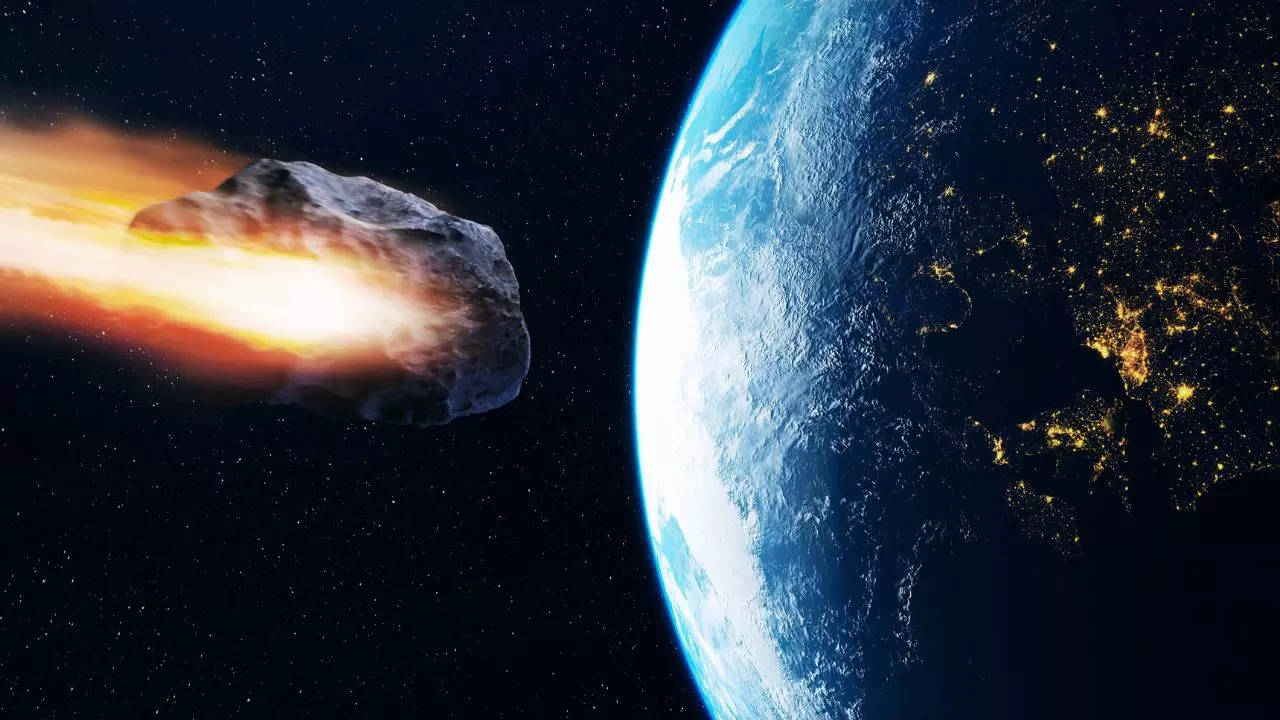An asteroid which measures more than 250 feet in diameter, the same size as that of Statue of Liberty, is hurtling towards earth at a very high speed. This asteroid, named Asteroid 2024 MT1, is expected to pass by earth on July 8,2024. NASA had earlier issued an alert for this giant space rock.
This rock is a part of a group known as Apollo asteroids. This group of near earth asteroids are named after the 1862 Apollo asteroid discovered by Karl Reinmuth, a German astronomer.At its closest point, this asteroid will be 1.5 million kilometers away from earth, this is about four times the distance between earth and the moon.
Asteroid 2024 MT1 is moving towards Earth at a speed of 65,232 kilometers per hour. It was first discovered by NASA’s Near-Earth Object Observations Programme- Asteroid Terrestrial-impact Last Alert System (ATLAS) at Sutherland Observing Station in South Africa, which is responsible for tracking near earth comets and asteroids. NASA currently uses NEO surveyor-a system which is used to discover and categorize hazardous asteroids and comets, and NEOWISE- a space telescope that helps NASA find and understand space objects that have potential to be destructive.
While the speed and size of the asteroid is concerning to scientists all around the world, NASA has assured that Earth doesn’t face any threat of collision from it for now. NASA’s Planetary Defense Coordination Office(PDCO) actively collaborates with other countries, space agencies and research institutes to establish asteroid deflection and impact management and prevention systems. It already has a mechanism called Double Asteroid Redirection Test (DART) mission, which is asteroid deflection technology.
Currently, NASA’s Jet Propulsion Laboratory(JPL) in Pasadena, California, is keeping track of the asteroid’s trajectory. According to JPL, the close approach of such huge sized asteroids is a rare occurrence, happening every couple of decades. For scientists this is a wonderful opportunity to investigate these rare asteroids. The structure and composition of the space rock can give interesting insights into the conditions and materials in the solar system.
Along with the asteroid that will pass on July 8th,2024, four more asteroids are scheduled to pass by earth till July 16. All these asteroids will be at a safe distance from our planet.
This rock is a part of a group known as Apollo asteroids. This group of near earth asteroids are named after the 1862 Apollo asteroid discovered by Karl Reinmuth, a German astronomer.At its closest point, this asteroid will be 1.5 million kilometers away from earth, this is about four times the distance between earth and the moon.
Asteroid 2024 MT1 is moving towards Earth at a speed of 65,232 kilometers per hour. It was first discovered by NASA’s Near-Earth Object Observations Programme- Asteroid Terrestrial-impact Last Alert System (ATLAS) at Sutherland Observing Station in South Africa, which is responsible for tracking near earth comets and asteroids. NASA currently uses NEO surveyor-a system which is used to discover and categorize hazardous asteroids and comets, and NEOWISE- a space telescope that helps NASA find and understand space objects that have potential to be destructive.
While the speed and size of the asteroid is concerning to scientists all around the world, NASA has assured that Earth doesn’t face any threat of collision from it for now. NASA’s Planetary Defense Coordination Office(PDCO) actively collaborates with other countries, space agencies and research institutes to establish asteroid deflection and impact management and prevention systems. It already has a mechanism called Double Asteroid Redirection Test (DART) mission, which is asteroid deflection technology.
Currently, NASA’s Jet Propulsion Laboratory(JPL) in Pasadena, California, is keeping track of the asteroid’s trajectory. According to JPL, the close approach of such huge sized asteroids is a rare occurrence, happening every couple of decades. For scientists this is a wonderful opportunity to investigate these rare asteroids. The structure and composition of the space rock can give interesting insights into the conditions and materials in the solar system.
Along with the asteroid that will pass on July 8th,2024, four more asteroids are scheduled to pass by earth till July 16. All these asteroids will be at a safe distance from our planet.
Denial of responsibility! Swift Telecast is an automatic aggregator of the all world’s media. In each content, the hyperlink to the primary source is specified. All trademarks belong to their rightful owners, all materials to their authors. If you are the owner of the content and do not want us to publish your materials, please contact us by email – swifttelecast.com. The content will be deleted within 24 hours.


